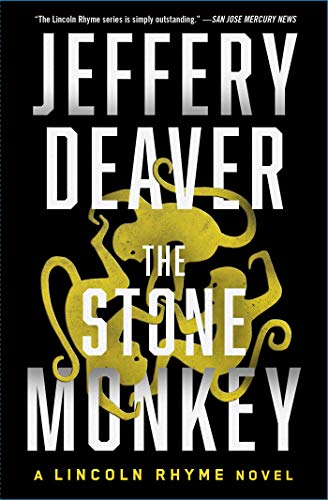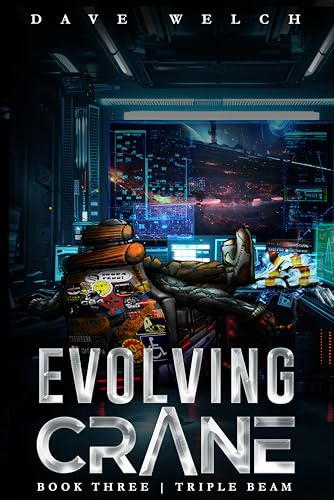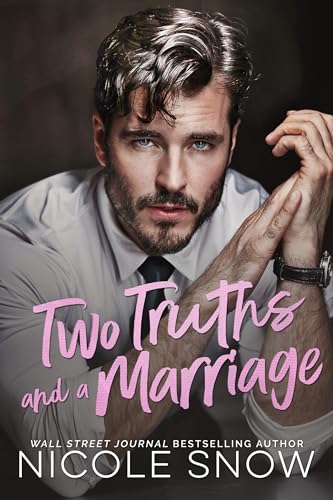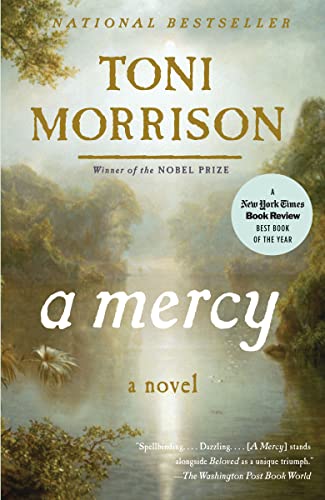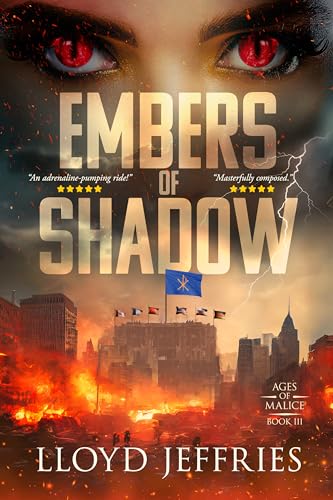Updating a post yesterday, as of this morning Apple’s iPad is now officially the #1 selling tablet in the Amazon Store, and that’s without Amazon having any warehoused copies of its own to sell. The obligatory screenshot, of course, is above. Both the 16GB wifi iPad and the 64GB wifi iPad are now in the top 25 among Amazon’s “Bestsellers in Computers and Accessories,” but the 32GB model is lagging behind due largely to a perhaps felicitous typo in in its listing. The prices of these third-party Amazon Marketplace listings are settling a bit, but we’re still talking about a premium of a hundred bucks or so over the prices charges in the Apple Store and at some big box retailers.
 Steve Windwalker
Steve Windwalker
Parsing Steve Jobs’ Numbers: 450,000 iPads Sold, 600,000 iBooks Downloads, But What’s Really Going On?
There are some interesting numbers floating around about the iPad and its iBooks Store, and some of them seem to merit a closer look.
- It was widely reported that there were at least 125,000 iPad pre-orders on the weekend of March 12-14, the first weekend when pre-orders were taken. So, if those 125,000 were counted in the 300,000 first-day total, as one would expect, does that mean that the total number ordered and sold fresh on Saturday, between all Apple Stores and other retailers like Best Buy, was only 175,000?
- How many pre-orders were recorded from March 15 to the beginning of April and included in the 300,000 April 3 sales? If those totalled 5,000 a day, could that mean there were only 125,000 fresh sales on April 3?
- In the iPad’s rendering of the App Store, the iBooks app is listed as the #1 top free iPad app. There’s not another “books” listing in the top 20, but a public domain app called Free Books is #21, a great Marvel Comics app is #22, and the Kindle for iPad app is #24 as of 8 p.m. EDT April 8.
- Meanwhile, if you look at the Top Free Apps under “books” in the iTunes Store’s App department as it comes up on a computer, the Kindle app is #1 and the iBooks app is nowhere to be found.
Some of this disparity would seem to be about the fact that the Kindle app is also an iPhone app, and the underlying fact that there are nearly 200 times as many iPhones and iPod Touches that can run it as the number of iPads that can run the iBooks app. But it does seem as if there may be some effort on Apple’s part — perhaps inadvertent? maybe they forgot there was something called the Kindle? — to tilt the playing field when one initiates a search for iPad-compatible books apps in the iTunes Store’s App department and finds dozens of apps listed, but no Kindle for iPad app:
From the Kindle Nation Mailbag: Changing Kindles and Keeping Your Content
“Hello Steve…. Question, I have the Kindle 1st generation but I want to get an newer one. Would you recommend it and if so which one would you recommend and will I be able to transfer my stuff on the old one to the new one?”
- All of the books that you bought in the Kindle Store will transfer easily to your new Kindle once you register the new Kindle to the same Amazon account. They will automatically go to your “archived items” folder, and you can then go to your Manage Your Kindle page to send any books wirelessly to the new Kindle. That will also be a good time to double check your Kindle subscriptions to periodicals and blogs like Kindle Nation Daily to activate them to your new Kindle.
- Then there’s the content that you may have acquired from sources other than from the Kindle Store. If you’re anything like me you’ve got plenty of free content, personal documents, music, podcasts, audiobooks, and pictures on your current Kindle, and what I would recommend is that you create a file on your computer called something like “Offload from Kindle 1” and use your USB cable to drag and drop (or copy and paste) all your existing files from your Kindle to it, with subfolders that mirror the subfolders on your Kindle such as “documents,” “audible,” etc. Then, once your new Kindle is up and running, it will be a snap to use the USB connection to drag and drop the files that you want to keep back from the computer to the appropriate folders on your Kindle 2.
Could the iPad Already Be the Bestselling Tablet Among Hundreds in Amazon’s Own Store?
Links to order an iPad through Amazon:
Related post: The Partnership Continues: Apple iPad Now Available from Third-Party Sellers on Amazon
By Stephen Windwalker
How great is the loyalty of Amazon customers? Apparently in some cases, it’s enough to justify paying $100 for a rather popular recently released product from a company that’s also reputed to get pretty high marks when it comes to customer loyalty.
When I posted yesterday about the iPad turning up on Amazon, I was a bit skeptical about how many prospective iPad buyers would take such a circuitous and more expensive route to acquisition:
at least for now it’s no “Big Deal.” The lowest third-party price for the base 16GB wifi model, as I post this note, is about $125 higher than the price at which the same model is available in the Apple Store. Even if you add in $6.49 for shipping and subtract sales tax in a back of the envelope comparison with the price you would pay directly to Apple, you would still be out a hundred bucks or so. Nearly all of the third-party sellers offering iPads at prices between $600 and $1,000 are low-volume or “just launched” sellers, and they may be hoping for some arbitrage profit if Apple happens to run out of iPads.
But the effect of the Apple Store’ current delay of “5 to 7 business days” in shipping the iPad is already generating income for Amazon and its third-party sellers. As of this morning, Amazon’s bestseller list for tablet computers shows the iPad ranked #2 and #3 among hundreds of worthy competitors. One explanation I hadn’t factored in yesterday is the possibility that many Amazon customers not only have easy 1-click payment processes set up there but also maintain gift card balances, gift registries, and similar assets with Amazon. In any case, if you take the two models combined it is entirely possible that the iPad is already Amazon’s topselling tablet:
I’m still scratching my head, and it’s tough to say how many sales it might take to generate such a lofty perch, but if Amazon and Apple have yet to finalize arrangements for Amazon to sell the iPad directly on the main Amazon website, this might begin to get their attention. Meanwhile, Amazon’s share of the profit for each iPad sold by a third-party Amazon Marketplace seller is 15%, minus any affiliate fees or commissions.
That’s going to average at least $100 a pop at the prices now listed, which is nothing to sneeze at when you consider that Amazon incurs now warehousing or fulfillment costs for these transactions and, in all likelihood, will also be selling beaucoup Kindle books through the Kindle for iPad App to these Amazon-loyal iPad buyers.
So, I’m just asking here: what’s not to like about Jeff Bezos’ business model?
Meanwhile, as noted yesterday, the Amazon Store may already be the best place to shop for iPad accessories like these:
Targus Hughes Leather Portfolio Slipcase Designed for 9.7 Inch Apple iPad TES00701US (Brown) (left, $59.99)
Apple Wireless Keyboard – $69 – I’ve been using one with the iPad for a couple of days and loving it
Be.ez 100884 LA robe Allure Sleeve for New iPad (Red Kiss) (left, $29.99)
Apple iPad Car Charger (White)
Scratch Defense Neoprene Sleeve for the Apple iPad
Belkin F8N277tt Pleated Sleeve for iPad – Black
Marware Sport Grip Pro for iPad Black/Black (left, $34.99)
Macally MSUITPAD Silicon Protective Case for iPad
Shade Anti-glare Film for iPad
Kindle Nation Daily Free Book Alert for Thursday, April 8, 2010: Three New Free Kindle Titles, and Dozens More
- “Free” in the Kindle Store refers, for now, to the price for download to US-based Kindles. Amazon adds charges for Kindles based beyond US borders.
- Originally posted to Kindle Nation Daily 4.8.2010.
- Click here (or type “kindle nation daily” in your Kindle’s Kindle Store search field) to have Free Book Alerts pushed directly to your Kindle 24/7 with a 14-day free trial to the Kindle edition of Kindle Nation Daily, the #1 bestselling blog in the Kindle Store.
- Click here to see RECENT KINDLE NATION DAILY FREE BOOK ALERTS.
Three new titles are free in the Kindle Store on Thursday morning, and here they are along with other free promotional titles in the Kindle Store.
No Kindle Required: Whether you are a long-time Kindle owner or you’ve just acquired an iPad and are filling it with ebooks for the first time or you are reading Kindle books on a PC, Mac, BlackBerry, iPhone or iPad Touch, you can get any and all of these titles absolutely free on your Kindle-compatible device of choice! Click here to download a free Kindle App for your device.
Just a little note here: the best way to find out about these listings right away, when they occur, is to subscribe to the Kindle edition of Kindle Nation Daily, which pushes Kindle Nation Daily Free Book Alerts directly to your Kindle Home screen 24/7. And as we observed again this weekend, “right away” is often just in time.
A Few Days into the Apple-Agency Pricing Model, Kindle Store Price Breakdown Shows Growth Between $10-$12.99 But Fewer Titles at $13 and Up
By Stephen Windwalker, Editor of Kindle Nation Daily
In these early days of Apple Pricing and Agency Model for the iBooks Store, which are also defining prices in the Kindle Store, it makes sense to pay even closer attention than usual to pricing trends. While the breakdown of books has not changed much at the price point ranges we’re monitoring here, there are some significant trends beginning to show. The number of books in the Kindle Store has increased by about a thousand titles a day since we last checked, to just over 487,000. The percentage of books at all price point ranges from zero to $9.99 remains virtually unchanged, but here’s what we are seeing at the three price point ranges we are tracking above $9.99:
- the percentage of Kindle Store books priced from $10 to $12.99 has risen from 1.24% to 1.55%, which is a 25% increase within the group and jump from 5,952 to 7,537 books;
- the percentage of Kindle Store books priced from $13 to 14.99 has fallen from 2.95% to 2.69%, a decline of nearly 10% within the group; and
- the percentage of Kindle Store books priced at $15 and up has fallen from 18.64% to 18.46%, which is not a significant change.
It may be early to seek meaning in this realignment, but it may suggest that new-release publishers who are trying to pay attention to the price elasticity of demand are taking the logical step of moving gradually away from earlier talk of prices over $12.99 as they see declining sales at $13 and up. Logical conclusions may seem unlikely in the upside-down and backwards world of ebook pricing that Steve Jobs has foisted upon us, but it’s always a possibility.
It’s also worth looking at the price-point breakdown of the top 100 titles in the Kindle Store bestseller list. As of April 1:
- 51 of the 100 bestselling ebook titles in the Kindle Store were at or about zero;
- another 44 were priced between a dollar and $9.99, inclusive;
- another 2 were priced between $10 and $12.99; and
- 2 more were priced between $13 and $14.99.
By comparison, this morning:
- the number of free books among the top 100 sellers has made a significant climb to 61, and if the books that were free over the weekend still showed a zero price that number would probably be over 70;
- bestsellers priced between a dollar and $9.99 have fallen by over a third to 28;
- the number of bestsellers priced between $10 and $12.99 has jumped from 2 to 7; and
- the number of bestsellers priced between $13 and $14.99 remains at 2.
The two primary conclusions I draw from this are certainly not earthshaking:
- the jump in free bestsellers among the top 100 is similar to what we saw immediately after the Kindle’s peak shipping period during the December 2009 holiday season, and is a signal that significant numbers of new iPad owners visited the Kindle Store during the last few days and loaded up on free books there; and
- Kindle Store customers are showing some willingness to pay over $9.99 for new release titles they really want to read, but are pretty resistant to prices over $12.99.
Here’s a price breakdown of the 487,715 book titles in the Kindle Store as of 9 a.m. EDT on April 7, 2010:
- 20,620 Kindle Books Priced “Free” (4.23%)
- 4,709 Titles Priced from a Penny to 98 Cents (0.97%)
- 46,360 Kindle Books Priced at 99 Cents (9.51%)
- 69,846 Kindle Books Priced from $1 to $2.99 (14.32%)
- 94,891 Kindle Books Priced from $3 to $4.99 (19.46%)
- 86,924 Titles Priced from $5 to $9.98 (17.82%)
- 53,705 Titles Priced at $9.99 (11.01%)
- 7,537 Titles Priced from $10 to $12.99 (1.51%)
- 13,124 Titles Priced from $13 to $14.99 (2.69%)
- 90,011 Titles Priced at $15 and Up (18.46%)
Here’s where we stood with the 480,238 book titles in the Kindle Store on April 1:
- 20,620 Kindle Books Priced “Free” (4.29%)
- 4,706 Titles Priced from a Penny to 98 Cents (0.98%)
- 43,993 Kindle Books Priced at 99 Cents (9.16%)
- 68,807 Kindle Books Priced from $1 to $2.99 (14.33%)
- 93,706 Kindle Books Priced from $3 to $4.99 (19.51%)
- 85,612 Titles Priced from $5 to $9.98 (17.83%)
- 53,124 Titles Priced at $9.99 (11.06%)
- 5,952 Titles Priced from $10 to $12.99 (1.24%)
- 14,158 Titles Priced from $13 to $14.99 (2.95%)
- 89,525 Titles Priced at $15 and Up (18.64%)
Here’s where we stood with about 463,000 Kindle Store titles on March 10:
- 20,125 Kindle Books Priced “Free” (4.34%)
- 2,588 Titles Priced from a Penny to 98 Cents (0.56%)
- 39,095 Kindle Books Priced at 99 Cents (8.44%)
- 64,105 Kindle Books Priced from $1 to $2.99 (13.84%)
- 90,580 Kindle Books Priced from $3 to $4.99 (19.55%)
- 84,055 Titles Priced from $5 to $9.98 (18.15%)
- 53,697 Titles Priced at $9.99 (11.56%)
- 5,793 Titles Priced from $10 to $12.99 (1.25%)
- 13,731 Titles Priced from $13 to $14.99 (2.96%)
- 89,448 Titles Priced at $15 and Up (19.31%)
And were’s where we stood with about 447,000 Kindle Store titles on February 25:
- 19,795 Kindle Books Priced “Free” (4.42%)
- 3,023 Titles Priced from a Penny to 98 Cents (0.67%)
- 36,370 Kindle Books Priced at 99 Cents (8.12%)
- 62,275 Kindle Books Priced from $1 to $2.99 (13.9%)
- 87,722 Kindle Books Priced from $3 to $4.99 (19.58%)
- 81,230 Titles Priced from $5 to $9.98 (18.13%)
- 55,269 Titles Priced at $9.99 (12.34%)
- 5,139 Titles Priced from $10 to $12.99 (1.15%)
- 9,331 Titles Priced from $13 to $14.99 (2.08%)
- 87,771 Titles Priced at $15 and Up (19.59%)
Amazon Continues to Expand Its Role as Print and eBook Publisher with Announcement of Amazon Encore Summer 2010 List
Amazon has numerous “secret weapons” as it continues to strive to make the Kindle Store the go-to venue for all participants — readers and authors alike — in the Kindle, er, the eBook Revolution. Among these, as we have noted before, are expanding commitments to publication of indie authors and backlist titles through programs such as
- the Kindle Digital Text Platform;
- Amazon’s CreateSpace POD and worldwide paperback distribution program;
- various Shorts programs;
- initiatives to invite successful authors like F. Paul Wilson, Ian MacEwan and Stephen Covey into more or less direct Amazon publishing relationships; and
- the company’s own AmazonEncore publishing house
.
Today Amazon announced an interesting array of six titles that it will publish through AmazonEncore this Summer. All six will be published both in paperback and Kindle editions, so that their ebook editions will be available on the Kindle, the iPad, the BlackBerry, the iPhone, the Mac, the PC, and other devices for which Kindle Apps will be launched in the next few months.
Here’s the list:
- Elizabeth Street by Laurie Fabiano
- Herb ‘n’ Lorna by Eric Kraft
- Double Bound by Nick Nolan
- The Berry Bible by Janie Hibler
- A King of Infinite Space by Tyler Dilts
- The Last Block in Harlem by Christopher Herz
AmazonEncore, still a tiny initiative after its launch less than 11 months ago with 16-year-old author Cayla Klaver’s previously self-published novel Legacy, nonetheless is charting an impressive growth arc with three titles released in February, four more this Spring, and six set for Summer. The actual Kindle Store release dates for the “Summer” titles fall in May, June,and July, and they are already available for pre-order.
The Kindle editions of current and future AmazonEncore titles are priced between $5.99 amd $9.99, several dollars less than the paperback editions. There’s no word yet on whether Steve Jobs will approach the AmazonEncore publishing house with an offer to carry the AmazonEncore titles in Apple’s iBooks Store if the publisher agrees to raise its ebook prices to $12.99.
Here’s the guts of this morning’s Amazon news release:
and as wireless digital downloads in less than 60 seconds from the Kindle Store (www.amazon.com/kindlestore
). For more information on AmazonEncore and upcoming titles, visit www.amazon.com/encore
.
“We’re excited to be able to announce such a diverse list of titles that AmazonEncore will be publishing this summer,” said Jeff Belle, Vice President, Amazon.com Books. “With titles ranging from a historical novel with roots in the criminal group that preceded the mafia to a love letter to Harlem with a fascinating backstory, we think readers will have a great time discovering these books this summer.”
- An addition to the spring 2010 list, Lyla Blake Ward’s “How to Succeed at Aging Without Really Dying” is a collection of essays on (in the 82-year-old author’s words) “living in a world of bubble packs you can’t open, electronics you can’t turn on, and expiration dates you can only hope don’t apply to you.” Lyla Blake Ward is a former newspaper and magazine columnist who lives in Connecticut. “How to Succeed at Aging Without Really Dying” was published April 6.
- Laurie Fabiano’s “Elizabeth Street” is a novel based on the true-life story of the abduction of Fabiano’s grandmother by the Black Hand, the precursor to the mafia, and her great-grandmother’s fight to get her daughter back. Tom Brokaw calls the book “a fascinating account of the Italian immigrant experience at the turn of the century that is at once inspiring and terrifying.” Fabiano lives in Hoboken, N.J., where she is the president of Fab Tool, a marketing and events company that advises non-profits. “Elizabeth Street” will be published on May 4.
- Originally published in 1988, Eric Kraft’s “Herb ‘n’ Lorna” is a novel about a young man who discovers after his grandparents’ death that they had a bawdy love affair predicated on their founding of the erotic jewelry industry. In a front page review in the New York Times Book Review, reviewer Cathleen Schine writes: “The novel is all about sex, and sex, in ‘Herb ‘n’ Lorna,’ means everything in life that is good–craft and art and imagination and hard work and humor and friendship and skill and curiosity and loyalty and love.” Kraft lives in New Rochelle, N.Y. and is the author of over 10 books, including his most recent novel “Flying.” “Herb ‘n’ Lorna” will be published on May 11.
AmazonEncore published Nick Nolan’s first novel “Strings Attached” in March 2010. In the sequel, “Double Bound,” protagonist Jeremy and his boyfriend Carlo are sent to Jeremy’s wealthy aunt to oversee the family business in Brazil, where they are accompanied by Arthur, the family’s butler. “Double Bound” is Arthur’s story: his heartbreaking youth, his days as a gay U.S. Marine, and his journey of self-discovery while in Brazil. Nolan lives in Los Angeles. “Double Bound” will be published on June 1. - In “The Berry Bible,” James Beard award-winning cookbook author Janie Hibler gets to the heart of berries, from their health benefits to how they are best put to use in the kitchen. In her research, Hibler traveled the world, visiting the Canadian prairie to search out Saskatoon berries; Alaska to pick wild blueberries; and Europe to peruse the markets for the best strawberries. “The Berry Bible” contains 175 recipes, as well as instructions on how to properly wash berries, freeze them, measure them correctly, and more. Hibler is a contributing writer to Food & Wine and Bon Appétit magazines and was a contributing writer to Gourmet. She lives in Portland, Ore.. “The Berry Bible” will be published on June 22.
- “A King of Infinite Space,” a mystery novel by Tyler Dilts, follows detective Danny Beckett as he hunts for the murderer of a local high school teacher. The son of a policeman, Dilts grew up fascinated with the work of homicide detectives. Currently an instructor at California State University in Long Beach, Dilts’ writing has appeared in publications such as the Los Angeles Times, the Chronicle of Higher Education, and “The Best American Mystery Stories.” “A King of Infinite Space” will be published on June 29.
- “The Last Block in Harlem” by Christopher Herz is a novel about a young man trying to fight the gentrification of his Harlem neighborhood. A former copywriter, Herz left his job upon finishing the manuscript of his book and began hand selling it in New York City. He walked the streets until he sold 10 copies a day, and his hand selling caught the eye of Publishers Weekly, which featured him in an August 2009 article. Herz still lives in New York City. “The Last Block in Harlem” will be published on July 13.
Announced in May 2009, AmazonEncore is a program which identifies exceptional books and emerging authors using information on Amazon.com, such as customer reviews and sales data. Amazon then works with the authors to introduce or re-introduce their books to readers through marketing and distribution into multiple channels and formats, such as the Amazon Books Store, Amazon Kindle Store, www.Audible.com, and national and independent bookstores via third-party wholesalers. AmazonEncore is a brand for titles published by Amazon Content Services LLC.

